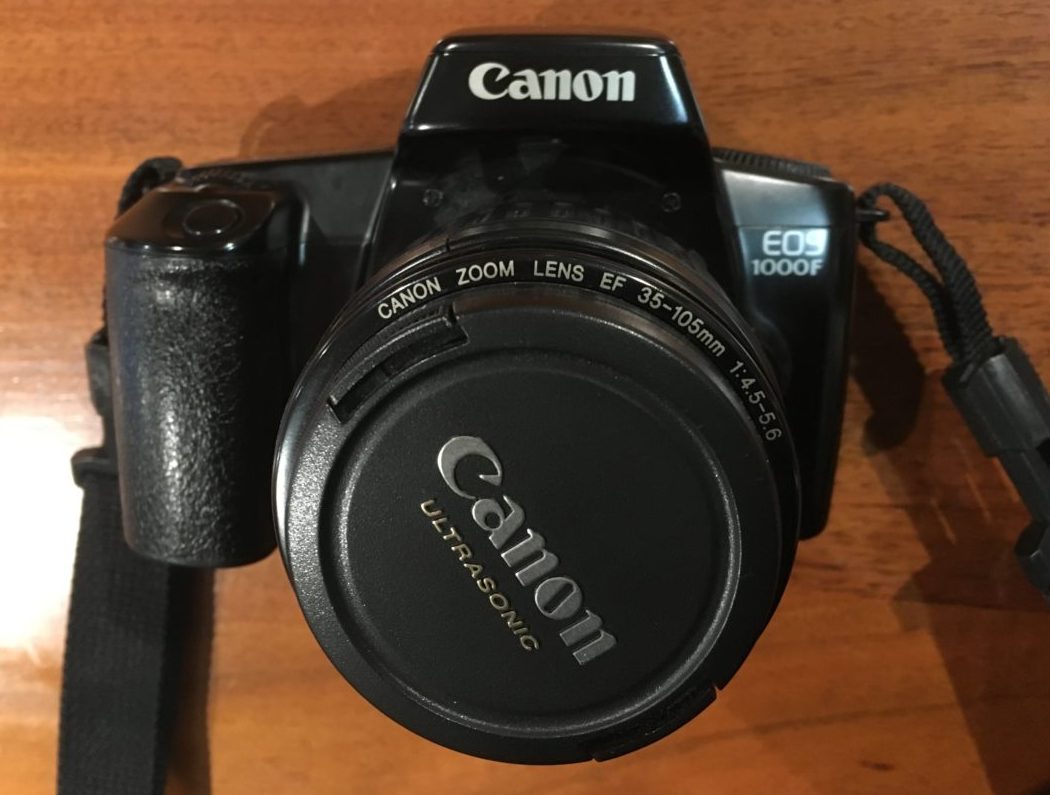 |
Years ago (years and years ago) I took pictures using small rolls of plastic covered with silver and stuffed into the back of various machines. My wife (bless her) has decided that she likes using cameras older than me to see what this is like. This includes developing her own film. She has a talent for it.
This has made me look again at what now seems to be called “analogue” photography. I did have a modest collection of old cameras, but, until now, had no interest in reviving the skills involved. However, now that I have my own “mini-lab” and don’t have to play around with developer and fixer myself (I did enough of this in my medical imaging days) I’ve decided to play around a bit and shoot some rolls of film.
This is the last film camera I had before switching to digital.
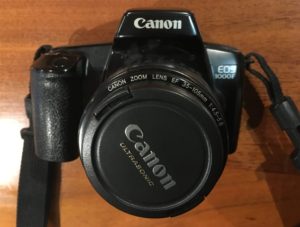
The Canon EOS 1000F. Note the lack of a “D”.
This served me well, and was lugged around Australia, North America, and New Zealand. Despite being dropped a few times (you can just see the crack in the focussing ring), it stood up well.
It’s a basic film SLR. Auto focus is slow compared to today. The lens cap is not the original so, no, it does not have an ultrasonic motor in the lens.
It has a motor winder built-in, which leads to an unusual feature. When you load a film and close the back, the camera immediately unspools all the film from the cassette onto the takeup reel, and as you take shots the film is drawn back into the cassette frame-by-frame. One upshot of this is that if the back is opened before all the film is used, the exposed frames are already in the cassette and protected from the light.
Anyway, I had acquired a couple of other film cameras with the view to mounting them on a panel and putting this on the wall as a piece of art/talking point. However, now that my wife has started shooting and developing film, I thought “why not”, and have revived the past by starting so shoot on film as well. This has also made me look at the film cameras I have as working cameras, rather than just display pieces.
I’ve focussed on two that I like; a Minolta X-300 and the X-300s.
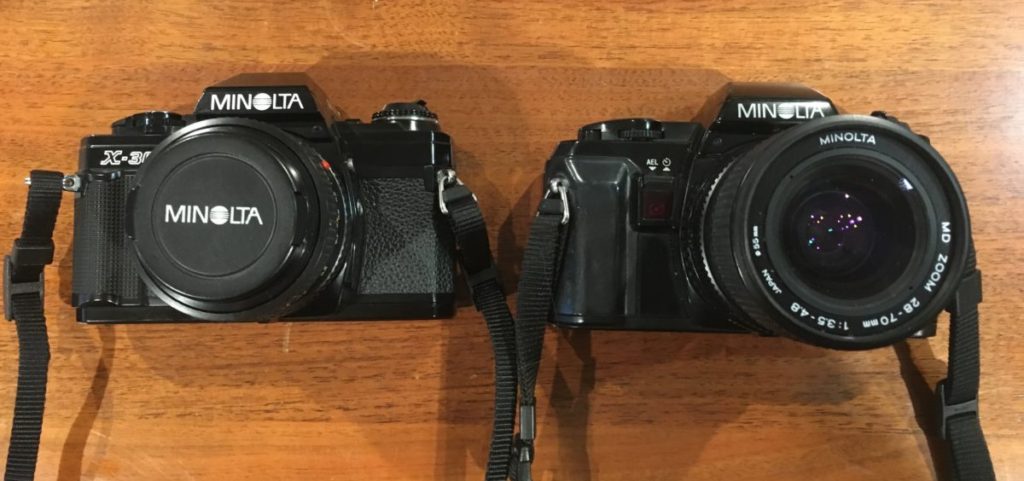
The X-300 is on the left, and the X-300s on the right. We picked up both of these very cheaply, since, apparently, film cameras are worthless. The X-300 cost $20, and came with a 50mm 1:1.7 prime. The X-300s cost $50, but this came with a 28-80 1:1.33 zoom, a 70-210mm 1:4.5 zoom, a working Minolta 200X flash, and a truly ugly camera bag.
The X-300 works perfectly, and is a lovely manual focus camera. The lenses are in great condition, and required only a little bit of cleaning.
The X-300s, however, was DOA. It just wouldn’t fire.
But, thought I, how complicated can such an old camera be? After poking around some websites, I found out that the problem I was having was due to a dead or dying capacitor, and that it is easy to replace. So, I opened the camera. This is under the base plate:
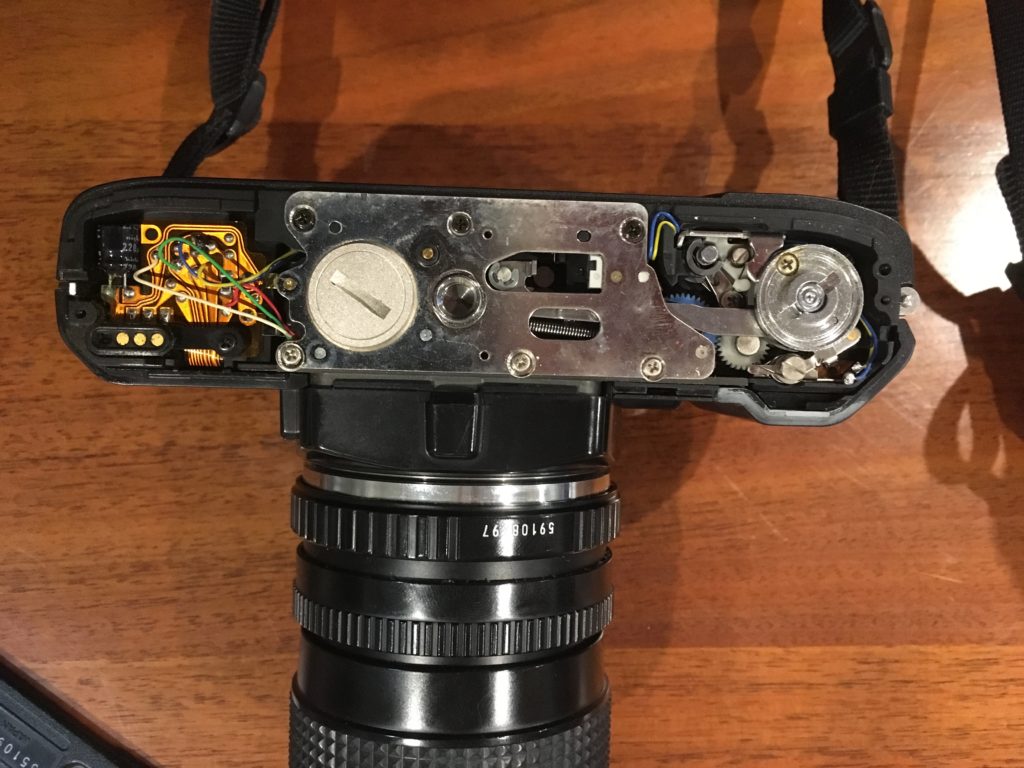
And this is the capacitor:
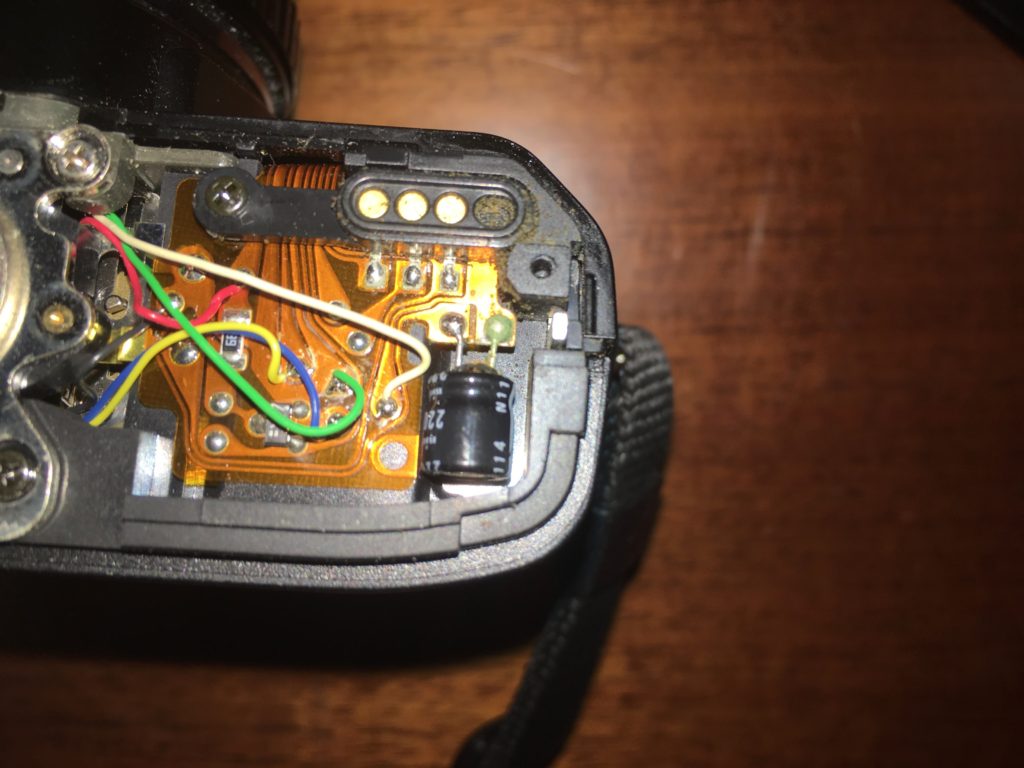
I’ve found a replacement the right physical size to fit. The only problem is I have to buy them in lots of 100, so I’ll have a few spares. These should come in the next week or so, and then I’ll get to try out my dodgy soldering skills. After all, how much more broken can I make it?
I’ve shot a roll of black and white on the X-300, and these have been developed by my wife. We now have a scanner that can scan negatives, so I’ll post some pics once I get the software figured out.
And, no. I have not stopped shooting digital. I’m not a complete Luddite. Just a part-time one.
 |

